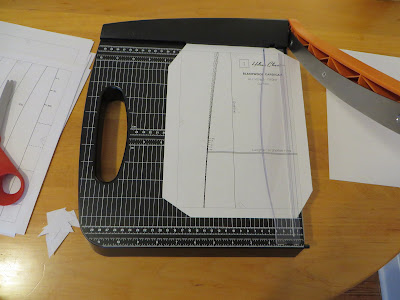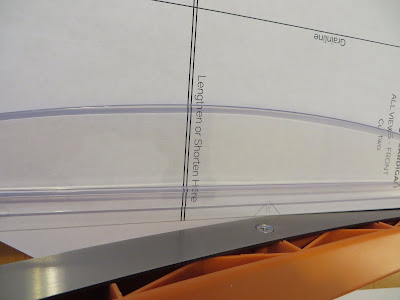My first version had a slightly stretched out neckline, so for this one, I inserted clear elastic along the neckline between the main fabric and the facing. I think this is a solid idea, but I stretched the elastic a touch too much as I inserted it, so I have some resulting wrinkling along the neckline. It mostly gets stretched out by wear, but I wouldn't call it an improvement.
To combat the hard-to-ease turn-and-fold hem, I made it narrower, which also backfired. Easing a narrower hem resulted in fewer lumps and bumps of excess fabric, but also a fairly flippy hem that needs regular ironing. This is probably not helped by this being a 100% cotton jersey, as they are prone to curling.
To help with the ties crunching up, I interfaced these ones with tricot interfacing. They are definitely stabilized, but they've got no stretch now, so they can be a bit constricting about the waist.
I do like this fabric a lot, even though it also performs in a more challenging manner for this particular make. This is a Max Mara cotton jersey knit with a palm print in black and turquoise. I absolutely adore the print. This fabric is 100% cotton, so it only has 20% stretch, and it's all mechanical stretch at that.
So what would I do next time? I would make this dress again, as I love the pattern. I would select a fabric with some spandex content, so it's a bit stretchier. I would skip interfacing the ties, which just made them less stretchy. I would stabilize the neckline again, but I would not stretch the elastic as I sewed. I would try a third hem option, and create a deep hem facing to avoid both the easing issues and the flippy narrow hem issues.
As it is, this dress has become a regular in my wardrobe, in spite of its flaws. Hopefully the third time is the charm, and my next one is just right!
















